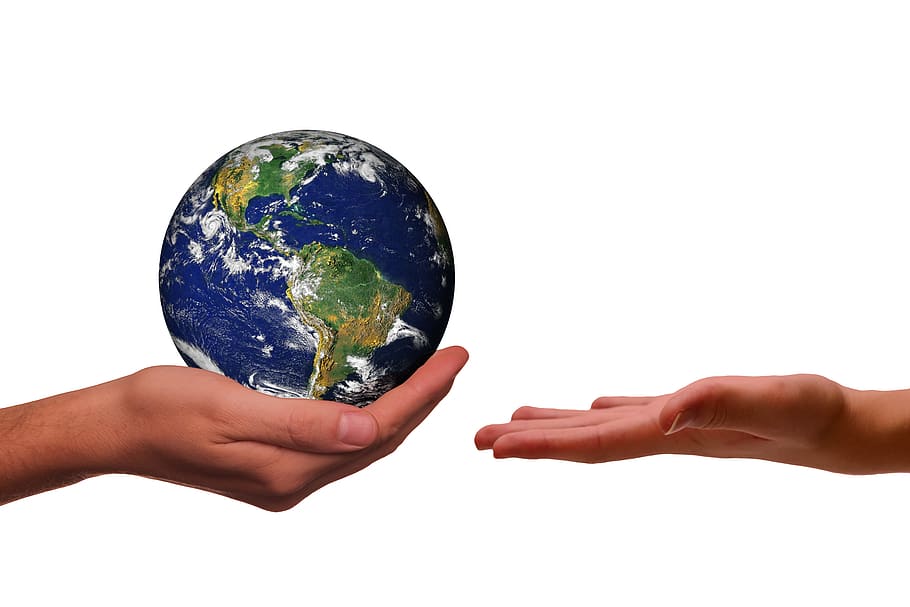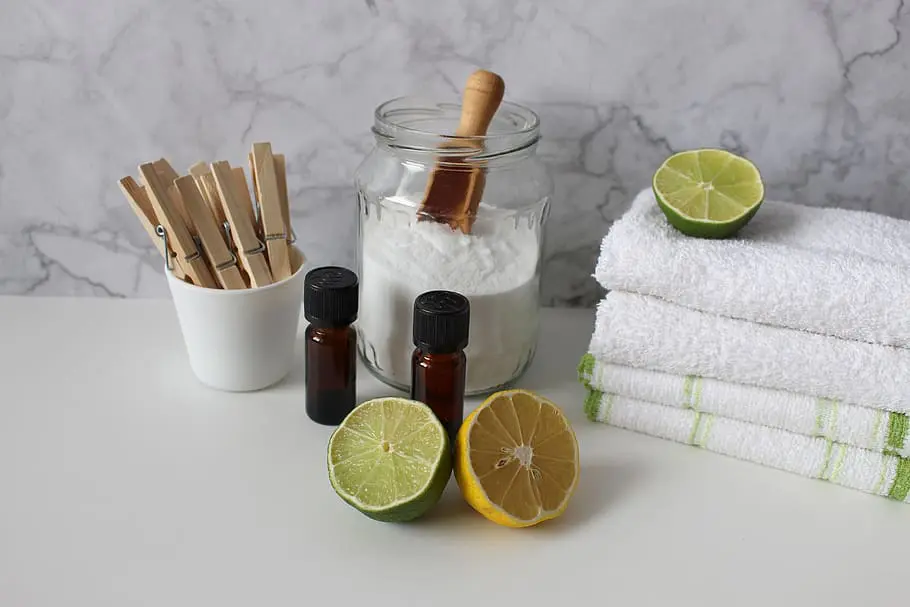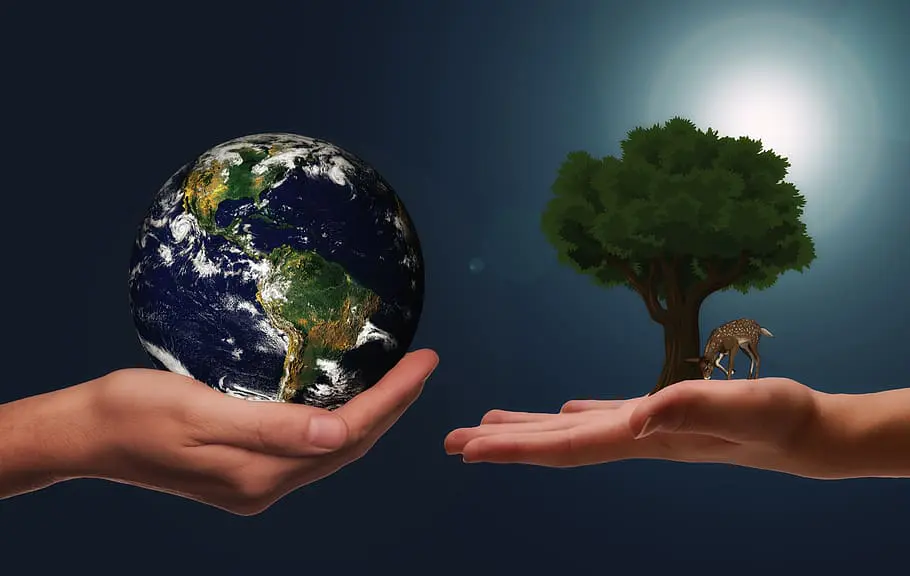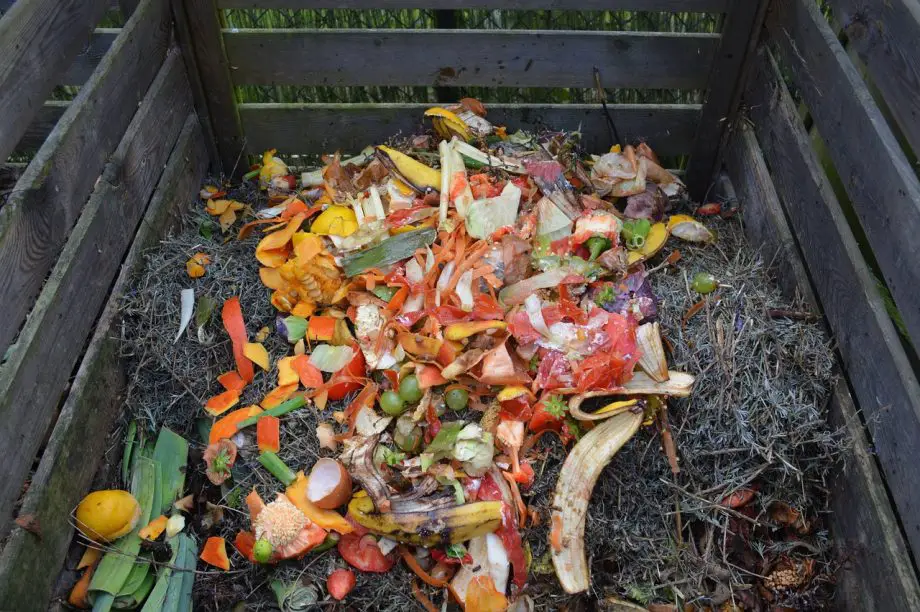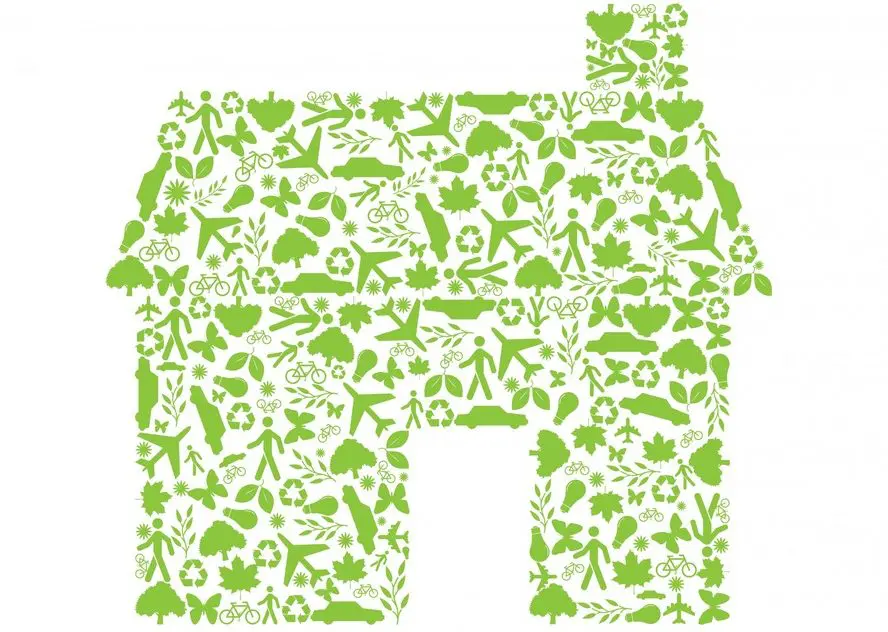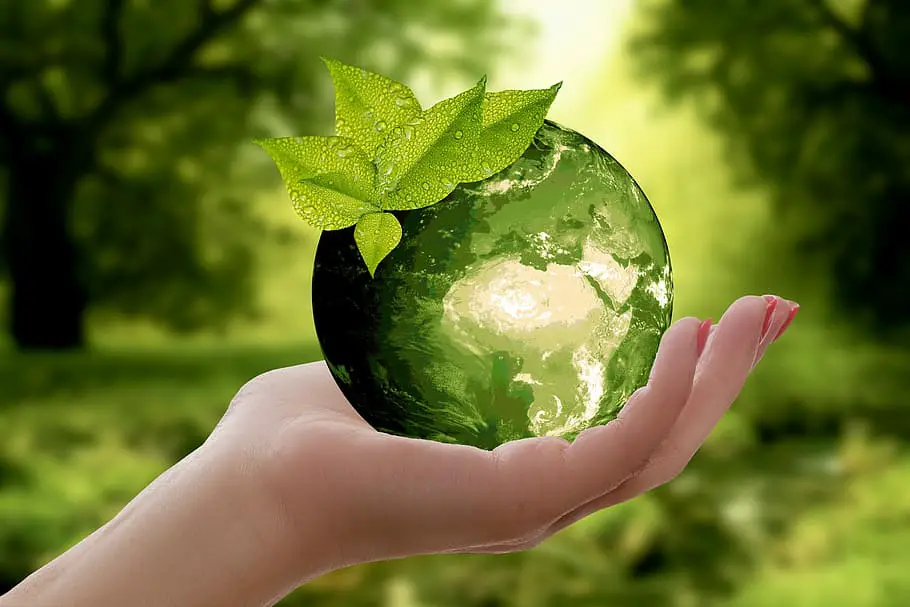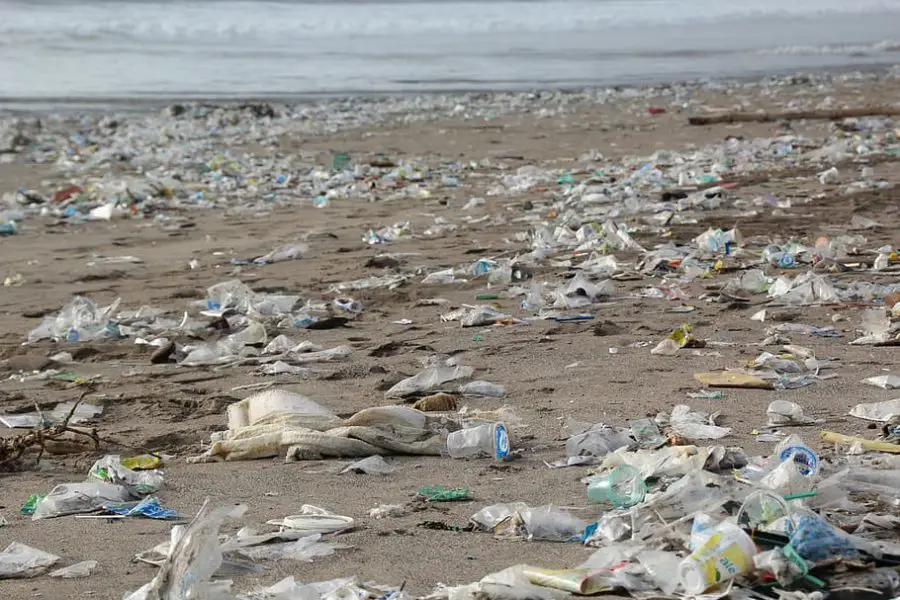
Looking to make a difference? Explore 10 easy ways to reduce your plastic footprint and start living greener today. Join the change!
Are you concerned about the mountains of plastic piling up on our beautiful planet?
You’re not alone, and the good news is that making a positive change is simpler than you might think.
In fact, with just a few small adjustments to your daily routine, you can start living a more eco-friendly lifestyle.
So, grab a comfy seat and a reusable cup of your favorite beverage, and let’s dive into 10 easy ways to reduce your plastic footprint.
It’s time to turn those concerns into actions, and I’m here to guide you every step of the way!
10 Easy Ways to Reduce Your Plastic Footprint
You’ve probably noticed that plastic is everywhere these days, from grocery store shelves to our very own kitchens.
But what if I told you that we can take charge of our plastic consumption and make a real difference?
In this blog post, we’ll explore 10 easy ways to reduce your plastic footprint, from ditching single-use plastics to supporting businesses that care about our planet.
Whether you’re a seasoned eco-warrior or just beginning your journey, these practical tips will help you cut back on plastic waste and live a more sustainable lifestyle.
Let’s embark on this green adventure together!
Introduce the global issue of plastic pollution
Have you ever stopped to think about where all those plastic items you use end up?
The unfortunate truth is, a significant amount of them find their way into our oceans, rivers, and landscapes.
Plastic pollution has become a global issue that’s threatening not just marine life but our entire ecosystem.
From those pesky plastic water bottles to disposable coffee cups, these everyday items are lingering far longer than we might realize.
And guess what? They’re having a party in places where they’re definitely not invited like our beautiful oceans and serene forests.
Define plastic footprint
So, you might be wondering, what exactly is a plastic footprint? It’s a term that puts a personal spin on this global problem.
Your plastic footprint is the total amount of plastic you personally contribute to the environment, both directly and indirectly.
Think of it like a trail of plastic crumbs that follows you around, from the grocery store’s plastic packaging to the take-out containers from your favorite restaurant.
The good news is, unlike stubborn cookie crumbs, we can actually do something about this trail!
The purpose of this blog post
Now that we’ve set the stage, let’s get down to business. The purpose of this post is to arm you with 10 easy ways to reduce your plastic footprint.
No jargon, no judgment, just straightforward, actionable tips you can start using right away.
We’ll explore everything from reusable bags to recycling hacks, and by the time you’re done reading, you’ll be equipped to make those small changes that can lead to a big difference.
Ready to join me on this journey to a cleaner, greener world? Let’s dive in!
10 Ways to Reduce Your Plastic Use
Alright, now that we’ve set the stage with the big picture of plastic pollution, it’s time to roll up our sleeves and dive into the heart of the matter.
I’m excited to share with you 10 tangible ways to cut back on plastic in your daily life.
These aren’t lofty ideals or complex processes – just simple, practical steps that anyone can take.
Whether you’re a busy parent, a college student, or someone who’s simply concerned about our beautiful planet, these tips are tailored for you.
So, grab your reusable water bottle, give yourself a high five for taking this eco-friendly step, and let’s get started on these 10 ways to reduce your plastic use. Ready? Let’s go!
1. Bring Your Own Reusable Bags When Shopping:
Let’s kick things off with something that’s both incredibly simple and remarkably effective: bringing your own reusable bags when you’re out shopping.
You know those single-use plastic bags you get at the checkout counter? They might seem harmless, but they add up pretty quickly!
Imagine a mountain of them, all destined for landfills or worse, our oceans.
But here’s the bright side: by swapping them with reusable bags, you can make a huge dent in that mountain.
Whether it’s a trip to the grocery store or a quick run to the local market, having reusable bags at the ready is a game-changer.
Let’s explore how you can make this small change a regular part of your shopping routine.
The Problem with Single-Use Plastic Bags:
The Environmental Toll: Picture this – a single-use plastic bag used for just a few minutes and then discarded, lingering in landfills for hundreds of years.
These bags aren’t just a waste problem; they’re also a wildlife issue.
Animals, both on land and in the sea, can mistakenly consume them, leading to harmful consequences.
A Widespread Issue: Ever wonder how many of these bags we use?
In the United States alone, it’s estimated that 100 billion are used each year.
That’s a whole lot of plastic with nowhere to go but our planet’s delicate ecosystems.
Options for Reusable Bags:
Material Choices: There’s a reusable bag for everyone! From sturdy canvas and cotton to recycled plastic, you’ve got options. Some are even foldable and fit right into your pocket.
Stylish and Functional: Worried about fashion? Don’t be! Many reusable bags come in fun designs and colors.
Functionality isn’t sacrificed either; some have pockets and compartments to help you organize your purchases.
Tips for Remembering Reusable Bags:
Keep Them Handy: Store them in your car, by the front door, or in your daily bag so you’ll always have one when you need it.
Make It a Habit: Attach a little reminder to your shopping list or set an alarm on your phone. It’ll become second nature in no time!
WISELIFE Reusable Grocery Shopping Bags
Budget-Friendly Choices: Major retailers like Amazon have a wide selection that won’t break the bank.
Supporting Local: Don’t forget to check out local markets and boutiques; they often carry unique reusable bags that support local artisans.
And there you have it! Making the switch to reusable bags is a straightforward yet powerful way to reduce your plastic footprint.
So next time you head out to the grocery store, why not bring your own bag and be a part of the solution?
It’s a small change with big rewards for our beautiful planet.
2. Say No to Straws:
Paper Straws,200 Pcs Paper Drinking Straws
The Ugly Truth About Straw Pollution:
Oh, those little plastic straws! They seem harmless enough when you’re sipping your favorite beverage, right?
But here’s the thing: millions of straws are used every single day, and most of them end up polluting our environment.
You see, plastic straws don’t break down easily. They linger in landfills and often make their way into our oceans, where they can harm marine life like sea turtles, dolphins, and even the fish we eat.
Ever seen those heartbreaking pictures of animals entangled in plastic? Straws are often part of that mess.
The numbers can be staggering, and it paints a picture that isn’t pretty.
Make the Switch: Exciting Alternatives to Plastic Straws:
Now that we’ve uncovered the dark side of plastic straws, you might be wondering, What can I do about it?
The answer is simple: switch to alternatives! There are many reusable options out there that can replace single-use plastic straws.
Stainless steel, bamboo, and even glass straws are gaining popularity, and for a good reason.
They’re durable, environmentally friendly, and often come with their own little cleaning brushes.
Even better? Many restaurants and cafes are joining the movement by offering paper or compostable straws. It’s a win-win for you and the environment!
Straw Alternatives: Where to Start and What to Choose:
So you’re on board with saying no to plastic straws, but where do you start? Let’s make it easy for you!
First, consider carrying a reusable straw with you. Many come in convenient cases that fit right in your bag.
If you prefer to use what’s offered at restaurants, simply ask for a paper or other eco-friendly straw.
Want to dive in deeper? There are plenty of online stores where you can find stylish and sustainable straws that suit your personality and needs.
Whether you’re a smoothie enthusiast or an iced coffee lover, there’s a reusable straw out there just for you.
Joining the movement against straw pollution is not only a positive step for the planet, but it’s also a fun way to express your commitment to a greener lifestyle!
3. Avoid Bottled Water:
Pogo BPA-Free Tritan Plastic Water Bottle
So, you’re on the run and feeling thirsty? It’s easy to grab a bottle of water from the nearest store, right?
I mean, it’s just a bottle of water, how bad could it be? Well, let’s chat about that seemingly innocent plastic bottle.
Those bottles add up, and they add up fast! In fact, millions of them are bought around the world every minute.
But don’t worry, there’s a solution, and it’s not only easy but stylish too.
Let’s dive into the world of reusable water bottles and discover how you can stay hydrated without adding to the ever-growing mountain of plastic waste. Trust me, it’s going to be a refreshing change!
The Shocking Impact of Plastic Water Bottles on Our Environment
Let’s talk about those plastic water bottles for a second. You might not realize it, but they’re doing a number on our beautiful planet.
Imagine a football field filled with plastic bottles, right? Now multiply that by, oh, about a million. Shocking, right?
That’s how much plastic waste we’re dealing with. And these bottles? They take hundreds of years to break down.
So not only are they cluttering up our landscapes, but they’re also harming marine life and releasing toxins into the environment. It’s a pretty big deal!
Say Hello to Reusable Bottles – Your New Best Friend
So, now that we know the problem, what’s the solution? It’s actually quite simple and kind of fun too. Reusable bottles!
You know, the ones you see in various shapes, sizes, and funky colors. These bottles are like your own personal statement against plastic pollution.
Fill ’em up with tap water, filtered water, or even your favorite flavored drink, and you’re good to go. Plus, you’ll save money in the long run. How cool is that?
Choosing the Perfect Reusable Bottle: A Handy Guide
Okay, let’s get down to business. What type of reusable bottle should you get? Stainless steel, glass, or maybe a BPA-free plastic one?
Well, each type has its charm. Stainless steel keeps things cold (or hot), glass is classy and chemical-free, and BPA-free plastic is lightweight.
You can find these gems at local markets, online stores, or even some coffee shops.
Look for the ones that suit your style and needs, and you’ll be sipping sustainably in no time!
By making these small changes, you’re playing a vital role in reducing plastic waste and promoting a healthier planet. Cheers to that!
4. Use Reusable Containers for Lunch:
Lunchtime! It’s a break we all look forward to in the middle of our busy days, but have you ever thought about the trail of waste we might leave behind with those disposable containers?
Yep, it’s a real problem, and it’s happening every single day, everywhere!
But hey, don’t worry. We’re here to help you turn that daily routine into a positive habit, one that’s kinder to our planet.
Ready to dive into the world of reusable containers for your lunch? Let’s explore together!
The Hidden Problem: Disposable Containers’ Impact on Waste:
Understanding the waste that comes from disposable containers can really open our eyes. Let’s delve into this often overlooked issue.
So, here’s the thing: those convenient disposable containers we often use for our lunches?
They’re stacking up in our landfills, creating a massive pile of waste. In fact, millions of these containers are tossed away every single day.
And they take hundreds of years to break down. Ouch! Imagine a mountain of wasted containers building up every time we enjoy a sandwich. It’s a pretty vivid image, isn’t it?
Say Hello to Reusable: Your New Lunch Buddies:
There are countless alternatives to disposable containers that are just waiting for you to discover them.
Let’s explore some options that are not only functional but fun as well!
So here’s the good news: there’s a whole world of alternatives out there! From classic Tupperware to trendy bento boxes, the options are endless.
These reusable containers are often made from sustainable materials like stainless steel or bamboo, making them a win for both you and the Earth.
You can even use beeswax wraps for sandwiches or snacks. These containers are easy to clean, durable, and – let’s face it – they can look pretty stylish too!
Where to Find Your Perfect Reusable Container:
Not sure where to buy these fantastic reusable lunch containers? We’ve gathered some links to help you find the perfect match for your taste and needs!
Ready to make the switch but not sure where to start? We’ve got you covered. Here are some fantastic places to find reusable containers that fit your taste and needs:

Stylish Stainless Steel Containers
Biodegradable Bamboo Lunch Boxes
So go ahead, choose a container that speaks to you, and make lunchtime an eco-friendly delight! Trust us, your meals will taste even better when they’re served with a side of sustainability!
5. Compost Food Scraps:
Ever find yourself wondering what to do with those leftover food scraps from dinner?
Well, instead of tossing them in the trash, why not give composting a try?
It’s like giving a second life to those vegetable peelings and fruit cores!
In our next section, Compost Food Scraps, we’ll dive into the wonderful world of composting.
From its environmental benefits to simple steps you can take to start your own compost pile at home, we’ll explore how this simple act can make a big difference.
So grab those banana peels, and let’s get started!
Unearth the Goodness: The Surprising Benefits of Composting
Composting might seem like a small effort, but the benefits it brings to the environment and your garden are immense.
From reducing greenhouse gas emissions to creating nutrient-rich soil, composting is like magic for Mother Earth.
We’ll explore the science behind this process and how it contributes to a healthier planet.
Getting Your Hands Dirty: A Simple Guide to Starting Your Compost Pile
Are you new to composting? No worries! Our easy-to-follow guide will walk you through the process of starting your compost pile.
From choosing the right location to understanding what to compost, we’ll set you up with everything you need to get started. Trust us; it’s easier than you think!
Dive Deeper into the World of Composting: Resources You’ll Love
Want to learn even more about composting? We’ve got you covered. We’ll share some additional resources, from books to websites, that will help you become a composting pro.
Composting Benefits: Comprehensive Guide – Sustainably Forward
Whether you’re looking for community composting initiatives or ways to involve the whole family, these resources will inspire you to take composting to the next level.
6. Recycle Plastic Whenever Possible:
Hey, do you know that recycling plastic isn’t as complicated as it seems? In fact, it’s one of those small changes that make a big difference.
Let’s face it, we all end up with some plastic in our lives, but the good news is that a lot of it can be given a second life.
From grocery store packaging to take-out containers, many items can be recycled, and it’s time we all get on board.
In this section, we’ll demystify the world of plastic recycling and share some tips to help you get started. Trust me, it’s easier than you think, and Mother Earth will thank you!
Understanding Which Plastics Can Be Recycled:
Recycling starts with knowing what can be recycled. Did you know that plastics are labeled with numbers from 1 to 7 inside a recycling symbol?
These numbers tell you whether they can be recycled. For instance, plastics labeled 1 and 2 are usually recyclable in most areas.
Always check your local guidelines, though, as some places may have unique rules!
How to Recycle Properly:
Now that you know which plastics can be recycled, let’s talk about how to do it properly.
It’s not just about tossing them in the recycling bin. Make sure they’re clean and free of food residue.
Some places require caps to be removed, while others don’t. It might seem like small details, but doing it right ensures that the plastic can be turned into something new.
Finding Recycling Centers Near You:
Not sure where to take your recyclables? No worries, there are tools to help you find the nearest recycling center.
Many towns and cities have websites with locator tools, and there are even apps that make it easy.
Just pop in your zip code, and voila, you’ll get a list of nearby locations.
Remember, recycling is a community effort, so join in and make it a regular part of your routine!
7. Buy Products Packaged in Recyclable Materials:
Do you know that satisfying crunch of a new product’s packaging? Well, let’s add an extra layer of satisfaction to it!
Imagine opening up your favorite snack or unboxing a new gadget and knowing that the packaging won’t end up harming the planet.
That’s what we’re going to explore in this section: buying products packaged in recyclable materials.
It’s a simple change with a significant impact, and it’s one more step towards being a friend to our Earth.
Join me, and let’s dive into how you can make this eco-friendly choice a regular part of your shopping routine!
Understanding Sustainable Packaging:
Sustainable packaging isn’t just a buzzword; it’s a movement toward protecting our planet. But what exactly does it mean?
Essentially, sustainable packaging utilizes materials that can be easily recycled or decomposed, lessening the burden on landfills.
By choosing products packaged in materials like recyclable cardboard, glass, or bioplastics, you’re not just buying the product; you’re also investing in a cleaner environment.
How to Identify Recyclable Packaging:
Now, you might be wondering, how do I know if something is packed in recyclable materials? Good question!
Look for labels like recyclable or the recycling symbol on the packaging. Some brands also include information about the packaging’s recyclability on their websites or product descriptions.
It might take a little detective work at first, but with time, spotting recyclable packaging will become second nature!
Brands Leading the Way in Sustainable Packaging:
Ready to start shopping? Let’s highlight some brands that are stepping up their game in sustainable packaging.
Companies like Unilever, Coca-Cola, and Johnson & Johnson have made commitments to improve their packaging sustainability.
Many local and organic brands are also embracing this trend, so don’t forget to explore options at your local markets.
Supporting these brands sends a strong message that you care about the environment, and it encourages more companies to follow suit!
8. Support Businesses Reducing Their Plastic Footprint:
Sure, let’s all be part of the change by supporting those who are leading the way!
When it comes to reducing our plastic footprint, we’re not alone. There are businesses out there working hard to minimize their own plastic use and help consumers like us do the same.
In the following section, we’ll shine a spotlight on these businesses, discuss why their efforts are so important, and explore how we can actively support them. Grab a reusable cup of coffee and let’s dive in!
Spotlight on Businesses Taking Action:
It’s easy to say we’re against plastic pollution, but actions speak louder than words.
Some businesses have embraced the challenge and are actively working to reduce their plastic footprint.
From using biodegradable packaging to offering discounts for customers who bring reusable bags, these companies are making a difference.
Brands like Lush and Patagonia, for instance, have taken significant steps to reduce plastic in their packaging and products. It’s not just a marketing gimmick; it’s a commitment to a healthier planet.
Your Shopping Choices Make a Difference
Guess what? You have the power to make a difference, too! Every time you spend money, you’re casting a vote for the kind of world you want.
By choosing to support businesses that prioritize sustainability, you’re telling other companies what matters to you.
The more we demand eco-friendly products and practices, the more businesses will respond.
Your choices influence not only the success of sustainable businesses but also the overall direction of the market. It’s the classic supply and demand equation with a green twist!
Finding Eco-Friendly Companies Near You:
So, where do you find these earth-friendly businesses? Luckily, there are several resources and directories out there to help you.
Websites like Ethical Consumer and B Corp offer guides to companies committed to social and environmental responsibility.
There’s also a growing number of smartphone apps like Good On You that rate brands based on their ethical practices.
Plus, don’t underestimate the power of social media. Following eco-conscious bloggers and influencers can lead you to some fantastic sustainable brands. It’s never been easier to shop with a conscience!
9. Educate Others About Plastic Pollution:
Ever been in a situation where you’re sipping from your reusable water bottle and your friend pulls out a single-use plastic one?
It’s not always about pointing fingers but rather opening eyes to the plastic problem we all face.
In this part, we’ll explore how you can gently educate those around you about plastic pollution.
It’s not just about changing habits; it’s about creating a ripple effect of awareness.
Together, we can turn the tide on plastic waste, one conversation at a time!
Emphasize the Influence of Education:
Education is a potent tool in our fight against plastic pollution. It’s not just about knowing the facts.
It’s about spreading awareness and making sure others understand why reducing plastic use is essential.
When people grasp the impact that plastic has on our environment, it drives them to make positive changes in their daily routines.
So, let’s get talking and teaching about the importance of reducing our plastic footprint!
Provide Ways to Share Information:
How do you get the message across without sounding like a nag? It can be as simple as sharing an informative video on social media or as personal as having a heart-to-heart with a friend.
Hosting an educational workshop in your local community or even at your workplace is a fantastic way to reach more people.
Remember, the key here is to keep it friendly and engaging. Make it a conversation, not a lecture.
Inspire Community Involvement:
Community involvement can be a game-changer in spreading awareness about plastic pollution.
Encourage your friends and family to take part in local clean-up events or even organize one yourself.
Support local businesses that are doing their part in reducing plastic waste.
The power of community can transform awareness into action, making a substantial difference in the local environment.
By fostering a sense of collective responsibility, you’re not only reducing plastic pollution but building a more cohesive and caring community.
10. Get Involved in Plastic Pollution Activism:
Ready to take your passion for reducing plastic pollution to the next level? Getting involved in activism isn’t as daunting as it may seem.
Whether you’re a seasoned campaigner or just starting, there’s a place for you in this global movement.
In the following section, we’ll explore ways you can join forces with others who are just as dedicated to making a change.
From joining local organizations to using your voice online, we’ll walk you through how to become an active part of the solution. Let’s turn that concern into action!
Explore Different Ways to Join the Movement:
There are countless ways you can get involved in plastic pollution activism, tailored to your interests, skills, and availability.
You can join local clean-up campaigns, volunteer for awareness-raising events, or even start your own initiatives.
If you’re more comfortable online, you can amplify messages and campaigns through social media or write blogs.
Remember, every action counts, and you can make a difference in your own unique way.
Discover Organizations You Can Align With:
Several organizations are at the forefront of fighting plastic pollution. These organizations offer numerous opportunities for volunteers.
Research local and international groups such as Greenpeace, Ocean Conservancy, or Plastic Pollution Coalition, to name a few.
Finding a group that resonates with your values can turn your concern into impactful action.
Jump In and Participate:
Don’t let anything hold you back from participating in the fight against plastic pollution.
Whether it’s attending rallies, signing petitions, or supporting brands that are committed to reducing their plastic footprint, your involvement matters.
Start small if you need to, and gradually expand your efforts. You’ll soon find that being part of a community striving for positive change is both rewarding and inspiring.
Joining hands with others will amplify your efforts and make a tangible difference in our world.
Ways to Reduce Your Plastic Footprint FAQs
Still got some questions buzzing around your head about reducing plastic pollution? You’re not alone!
It’s a big topic, and there’s a lot to digest. That’s why I’ve pulled together this handy FAQ section.
Whether you’re wondering how to start making changes in your own life or you’re curious about the bigger picture, I’ve got you covered.
Let’s dive into some of the most common questions people ask, and I’ll share some straightforward answers to help you on your journey to a plastic-free lifestyle.
Q: How can I reduce my plastic footprint?
A: Reducing your plastic footprint is easier than you might think! Start with small changes like using reusable bags instead of single-use plastics, choosing glass or stainless steel containers, and recycling plastics whenever possible.
Consider supporting businesses that minimize plastic in their packaging, and don’t forget to spread the word to others!
Q: What is the easiest way to reduce plastic waste?
A: The easiest way to reduce plastic waste is by eliminating single-use items from your daily life.
Swap out plastic water bottles for reusable ones, say no to plastic straws, and use cloth bags instead of plastic ones at the grocery store. These simple changes can make a significant difference.
Q: What are 5 ways you can tackle plastic pollution?
A: 1. Avoid Single-Use Items: Skip the disposable utensils and plates.
2. Recycle Properly: Learn what plastics can be recycled in your area and follow the guidelines.
3. Support Sustainable Brands: Choose products with minimal or recyclable packaging.
4. Educate Yourself and Others: Knowledge is power! Understand the impact of plastic and share it with friends and family.
5. Participate in Clean-Up Events: Join local community clean-up events or organize one yourself!
Q: How can kids reduce plastic?
A: Kids can play a big role in reducing plastic, too! They can use reusable water bottles and lunch containers, say no to plastic straws, and help with recycling at home.
Encouraging them to learn about plastic pollution and share what they know with their friends can also make a big impact.
Schools and parents can support them by providing opportunities to learn and practice these good habits. It’s never too early to start being an environmental steward!
10 Easy Ways to Reduce Your Plastic Footprint Conclusion
Well, there you have it, friends! We’ve embarked on quite a journey together, unraveling the tangled web of plastic and discovering ways to set ourselves free.
From simple swaps to community efforts, we’ve explored the avenues to make our world a little greener.
As we wrap things up, let’s take a moment to reflect on the highlights and look ahead to how we can turn these insights into action.
After all, the path to reducing our plastic footprint is a shared adventure, and every step counts. Shall we recap?
Recap the 10 Easy Ways:
We’ve come a long way together, haven’t we? Let’s take a stroll down memory lane and revisit the 10 easy ways we’ve explored:
1. Bringing our own reusable bags when shopping to wave goodbye to single-use plastic bags.
2. Saying no to straws and embracing alternatives like reusable or biodegradable ones.
3. Avoiding bottled water by loving our reusable bottles instead.
4. Packing lunch in reusable containers for a waste-free mealtime.
5. Composting food scraps to turn waste into nourishment for our gardens.
6. Recycling plastic whenever possible to give new life to our old plastic items.
7. Buying products packaged in recyclable materials to support sustainability.
8. Supporting businesses reducing their plastic footprint and rewarding them with our loyalty.
9. Educating others about plastic pollution to spread awareness and action.
10. Getting involved in plastic pollution activism to be part of the bigger change.
Inspire Reader Action:
But hey, knowing is just half the battle! The real magic happens when we put these ideas into action.
Why not start with one or two changes and build from there? Whether it’s opting for a bamboo toothbrush or making a conscious choice to buy loose veggies at the local market, every small change counts.
Together, we can create a ripple effect that turns into a wave of positive change.
Our planet, our future generations, and even our own well-being will thank us for it.
Let’s be the spark that ignites change, not someday but today!
Sustainable Living Ideas: 20 Green Growth Ideas








